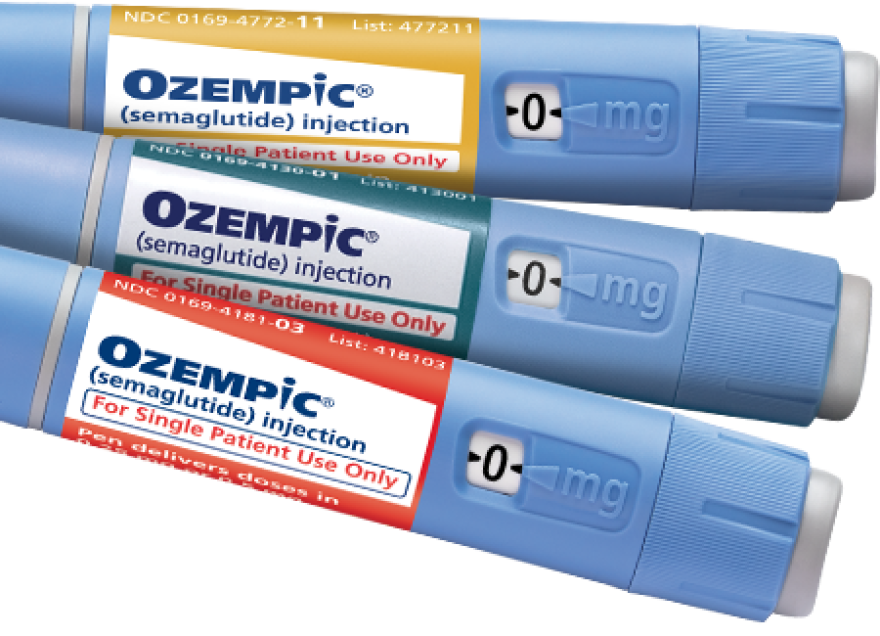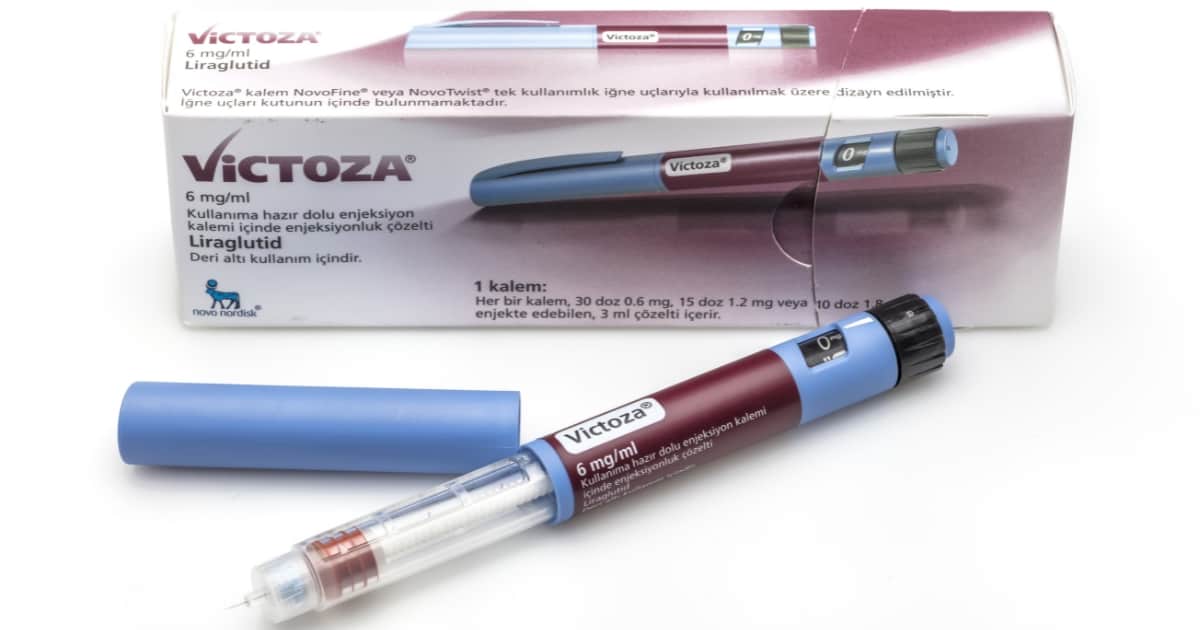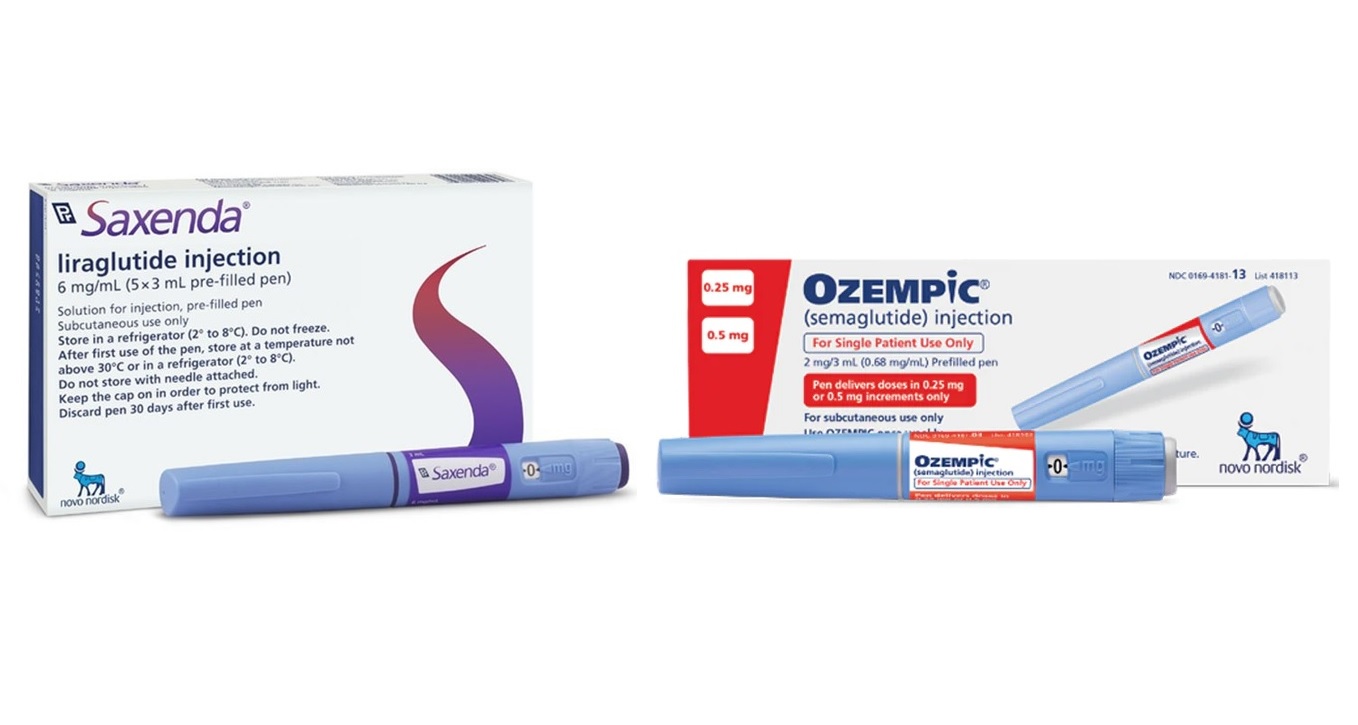Liraglutide and semaglutide are two prescription medications that have been gaining attention in recent years for their effectiveness in managing type 2 diabetes and promoting weight loss. Both drugs belong to the class of glucagon-like peptide-1 (GLP-1) receptor agonists, which work by mimicking the action of a natural hormone in the body that helps regulate blood sugar levels. Known by their respective brand names as Victoza (liraglutide) and Ozempic (semaglutide), these medications share similarities in their mode of action and therapeutic use, but they also exhibit differences in terms of efficacy and potential side effects.
A study comparing semaglutide and liraglutide revealed that over a 68-week trial, adults with overweight or obesity but without diabetes on semaglutide saw an average of 15.8% weight loss, whereas those on liraglutide experienced a 6.4% weight loss. This suggests that semaglutide may be more effective for weight loss in this specific patient population. In terms of diabetes management, oral semaglutide has been found to be non-inferior to subcutaneous liraglutide in reducing HbA1c levels for type 2 diabetes patients.
Despite the demonstrated effectiveness of both medications, it is essential to consider the potential side effects and individual patient needs when choosing between liraglutide and semaglutide. While both drugs have shown promising results for type 2 diabetes management and weight loss, patients and healthcare providers should carefully weigh the benefits and risks of each medication to determine the most suitable treatment option.
Reader's Roadmap
Chemical Composition and Drug Class
Liraglutide and semaglutide are two medications belonging to the drug class known as glucagon-like peptide-1 (GLP-1) receptor agonists. These drugs are designed to mimic the function of the naturally occurring hormone GLP-1, which plays a crucial role in the regulation of glucose levels and insulin secretion in the body.
The active ingredient in liraglutide is a modified form of human GLP-1. Its chemical structure has been altered to enhance stability and prolong its half-life. Specifically, a fatty acid side chain is attached to the peptide, which increases its resistance to enzymatic degradation and allows for once-daily dosing. Liraglutide can be used to treat type 2 diabetes and has also been approved to aid weight loss in adults with obesity.
Semaglutide, on the other hand, shares similarities in its chemical composition with liraglutide. However, it has been further modified to increase its half-life and potency. The addition of two amino acid substitutions and attachment of a hydrophilic spacer further enhances its resistance to degradation, allowing for once-weekly dosing. Semaglutide is also used for the treatment of type 2 diabetes and has been shown to be effective in promoting weight loss.
Both liraglutide and semaglutide act by binding to and activating the GLP-1 receptor. When the receptor is activated, it stimulates insulin secretion from the pancreatic beta-cells in response to increased blood glucose levels. This, in turn, leads to a decrease in blood glucose levels. Furthermore, these medications have been shown to slow down gastric emptying, which helps reduce appetite, leading to weight loss for some individuals.
Overall, liraglutide and semaglutide share a common drug class as GLP-1 receptor agonists. Although they have similar chemical compositions, the modifications in their structures result in different pharmacokinetic profiles, affecting their dosing schedules. Both medications have shown effectiveness in treating type 2 diabetes and supporting weight loss.
Manufacturers and Brand Names
Novo Nordisk, a leading pharmaceutical company, manufactures two GLP-1 receptor agonists: Liraglutide and Semaglutide. These medications are popularly prescribed for the management of type 2 diabetes and weight loss. Each drug is marketed under different brand names, catering to specific needs and regulations.
Liraglutide is available as Victoza and Saxenda. While Victoza is prescribed for controlling blood sugar levels in type 2 diabetes, Saxenda is specifically designed for weight loss in people with obesity or those who are overweight and have weight-related medical problems. Treating patients with the goal of diabetes management and weight loss, these brand-name drugs have been proven effective.
On the other hand, Semaglutide is marketed under the brand names Ozempic and Wegovy. Similar to Liraglutide, Ozempic is prescribed for blood sugar control in type 2 diabetes patients. Wegovy, however, focuses on weight loss and is approved to help patients struggling with obesity and diabesity, a combination of diabetes and obesity.
While brand-name drugs are more widely known, generic drugs containing the same active ingredients are often available. However, as of now, there are no generic alternatives to Victoza, Saxenda, Ozempic, or Wegovy. This is mainly because these medications are relatively new, and their respective patents have yet to expire.
In conclusion, Novo Nordisk plays a significant role in the production of Liraglutide and Semaglutide, offering them under the brand names Victoza, Saxenda, Ozempic, and Wegovy. These medications cater to the needs of individuals with type 2 diabetes, obesity, and diabesity, but generic alternatives are not currently available.

Mechanism of Action
Liraglutide and semaglutide are both GLP-1 receptor agonists, meaning they mimic the effects of glucagon-like peptide-1 (GLP-1), a natural hormone in the body. GLP-1 has a significant impact on glycemic control and body weight regulation, making these drugs effective for treating type 2 diabetes (T2D) and supporting weight loss efforts.
Liraglutide and semaglutide work by binding to the GLP-1 receptor, which is expressed in various tissues, mainly pancreatic islets, as well as gastric mucosa, kidney, lung, heart, skin, immune cells, and the hypothalamus. Their primary effect is stimulating glucose-dependent insulin release from pancreatic islets, thereby improving glycemic control in patients with T2D. Additionally, they can slow down gastric emptying and reduce food intake, indirectly contributing to weight loss.
It is important to note that both liraglutide and semaglutide are derivatives of human GLP-1, but they have unique properties that make them therapeutically useful. Both drugs have been designed to resist the activity of an enzyme called dipeptidyl peptidase-4 (DPP-4), which naturally degrades GLP-1 in the body. This resistance allows these drugs to have a prolonged half-life, making them suitable for long-term use as medications.
Despite their similarities, liraglutide and semaglutide also have differences in their dosing schedule and potency. Liraglutide is administered once daily, while semaglutide is provided as a once-weekly injection. Some studies have shown that semaglutide leads to more significant weight loss when compared to liraglutide, with a reduction in caloric intake estimated at 35% for semaglutide-treated patients versus 16% for those treated with liraglutide.
In summary, liraglutide and semaglutide are GLP-1 receptor agonists that support glycemic control and weight loss by stimulating insulin release, slowing gastric emptying, and reducing food intake. Both drugs have extended half-lives due to their resistance to DPP-4, allowing for therapeutic use in T2D treatment and weight loss efforts.
Use in Diabetes
Liraglutide and semaglutide are two medications that play a significant role in managing diabetes, particularly type 2 diabetes. As glucagon-like peptide-1 (GLP-1) receptor agonists, they imitate the function of the incretin hormone GLP-1, which helps regulate blood sugar levels in the body. Both medications have been shown to improve glycemic control and reduce the risk of hypoglycemia.
For people with type 2 diabetes, maintaining healthy blood sugar levels is crucial. Liraglutide and semaglutide help achieve this by stimulating insulin secretion, suppressing glucagon secretion, and slowing gastric emptying. This combination of effects helps to reduce post-meal blood sugar spikes and manage overall glucose levels.
In some cases, liraglutide and semaglutide can be used in conjunction with metformin, which is a commonly prescribed oral medication for type 2 diabetes. Metformin works by decreasing the liver’s glucose production and increasing insulin sensitivity in muscle cells, allowing more glucose to be absorbed. Combining these medications can provide greater blood sugar control for patients who do not respond adequately to metformin alone.
The American Diabetes Association (ADA) establishes treatment guidelines for diabetes, emphasizing individualized management and including GLP-1 receptor agonists like liraglutide and semaglutide. According to the ADA, these medications can be considered as an add-on to metformin or as part of a dual or triple therapy regimen for patients with type 2 diabetes who have not achieved their target blood sugar levels.
It is essential to note that while liraglutide and semaglutide may help manage blood sugar levels, they are not without risks. Both medications have been associated with gastrointestinal side effects such as nausea and vomiting, which typically decrease over time. Additionally, a rare but severe side effect of these medications is the risk of low blood sugar levels (hypoglycemia) when used in combination with other glucose-lowering medications, like sulfonylureas or insulin.
In summary, liraglutide and semaglutide serve as valuable tools for patients with type 2 diabetes, helping them manage blood sugar levels and adhere to ADA treatment guidelines. However, healthcare providers must carefully weigh the potential risks and benefits when prescribing these medications to ensure the best possible patient outcomes.
Use in Weight Management
Liraglutide and semaglutide are two medications frequently used in weight management, particularly for individuals who struggle with obesity or maintain a higher BMI. Both drugs belong to the class of glucagon-like peptide-1 (GLP-1) receptor agonists and primarily target blood glucose control and weight loss in patients with type 2 diabetes or obesity.
Weight loss is an essential aspect of managing obesity, which can lead to improved overall health and reductions in related comorbidities. A balanced diet and regular physical activity are crucial in achieving and maintaining a healthy body weight. However, when diet and exercise alone prove insufficient, anti-obesity medications like liraglutide and semaglutide may be prescribed.
Liraglutide is administered daily, while semaglutide is a weekly injection. A study found that the mean weight change from baseline was significantly greater in the semaglutide group (-15.8%) than in the liraglutide group (-6.4%). This indicates that semaglutide may provide more effective weight loss results in some cases when compared to liraglutide. However, it is worth noting that individual results may vary.
Moreover, the reduction in caloric intake appears to be greater with semaglutide, at about 35% versus 16% with liraglutide. This further supports the role of semaglutide as a potentially more effective option for managing body weight.
Aside from their effect on weight loss, both liraglutide and semaglutide help manage blood glucose levels, particularly in individuals with type 2 diabetes. When selecting an appropriate treatment option for weight management, healthcare providers should consider patient-specific factors, such as their medical history, comorbidities, treatment goals, and preferences.
In conclusion, liraglutide and semaglutide can be beneficial options for individuals looking to improve their weight management efforts. While semaglutide appears to have a more significant impact on weight loss and caloric reduction, it is crucial to consult a healthcare professional for personalized advice and to determine the best course of treatment for individual needs.
Results from Clinical Trials
In a randomized clinical trial published in JAMA, researchers compared the effect of weekly subcutaneous semaglutide vs daily liraglutide on body weight in adults with overweight or obesity without diabetes. The study found that once-weekly subcutaneous semaglutide, when added to counseling for diet and physical activity, resulted in significantly greater weight loss at 68 weeks than once-daily subcutaneous liraglutide.
Another clinical trial assessed the non-inferiority of oral semaglutide to subcutaneous liraglutide in reducing HbA1c in patients with type 2 diabetes. The results of this trial demonstrated that oral semaglutide is comparable in efficacy to subcutaneous liraglutide for improving glycemic control in type 2 diabetes patients.
A large-scale randomized, open-label trial published in the New England Journal of Medicine evaluated the efficacy of once-weekly semaglutide in adults with overweight or obesity. The study found that the mean change in body weight from baseline to week 68 was significantly greater in the semaglutide group compared to the placebo group (-14.9% vs -2.4%).
During the clinical trials, several secondary endpoints were evaluated, such as changes in waist circumference, blood pressure, and lower body weight. In these trials, both liraglutide and semaglutide showed improvements in these secondary endpoints, further supporting their beneficial effects in weight management and diabetes control.
To summarize, the results from clinical trials showed that both liraglutide and semaglutide were effective in promoting weight loss and improving glycemic control in overweight or obese adults without diabetes and in patients with type 2 diabetes. Notably, the once-weekly subcutaneous semaglutide demonstrated greater weight loss when compared to the once-daily subcutaneous liraglutide.
Comparison of Effectiveness
In the realm of type 2 diabetes treatments, liraglutide and semaglutide are commonly prescribed glucagon-like peptide-1 receptor agonists (GLP-1 RAs). Both medications have been shown to provide cardiovascular benefits for patients. However, differences exist in their effectiveness and tolerability when treating patients with type 2 diabetes mellitus (T2DM).
Liraglutide is administered once daily, while semaglutide is given once weekly. In terms of weight loss, semaglutide has been found to have greater effectiveness. Over a 68-week trial, adults with overweight or obesity but without diabetes experienced an average weight loss of 15.8% with semaglutide, in contrast to 6.4% with liraglutide. Furthermore, semaglutide was found to have a more significant effect on appetite reduction compared to liraglutide.
Comparing their efficacy in clinical practice, both liraglutide and semaglutide showed positive results in diabetes management. However, a study conducted on a Veteran population revealed that the once-weekly semaglutide resulted in a slightly more considerable reduction in hemoglobin A1c levels compared to the once-daily liraglutide. This finding indicates that semaglutide may be more effective in lowering blood glucose levels over an extended period.
Tirzepatide, another novel treatment option being investigated for type 2 diabetes, is not yet commercially available. As such, direct comparisons with liraglutide and semaglutide are not feasible at this time. However, preliminary research indicates promising results for the effectiveness of tirzepatide. Future studies may provide insights into the comparative efficacies and tolerabilities of these three treatment options.
In summary, both liraglutide and semaglutide have proven effective in diabetes management, with some distinctions in efficacy and weight loss outcomes. Careful consideration should be given to individual patient needs and treatment goals when determining the optimal medication choice.
Administration and Dosage
Liraglutide and semaglutide are both injectable medications used to manage blood sugar levels in patients with diabetes. They belong to a class of medications called glucagon-like peptide-1 (GLP-1) receptor agonists and help in regulating blood sugar and promoting weight loss.
Liraglutide is administered as a subcutaneous injection once daily. The initial dose is usually 0.6 mg, which is injected under the skin. After one week of treatment, the dose can be increased to 1.2 mg daily if further glycemic control is needed. In some cases, the dose may be further increased to 1.8 mg daily after at least one week of treatment with the 1.2 mg daily dose. Patients should follow their healthcare provider’s specific instructions on how and when to administer liraglutide.
Semaglutide, on the other hand, is administered as a weekly subcutaneous injection. The dosage and administration of semaglutide may vary depending on individual factors and the specific goals of the treatment plan. For example, semaglutide 0.5 mg once weekly has been found to be significantly more effective than liraglutide 1.2 mg daily in reducing HbA1c levels, with a treatment difference of 0.17%. In terms of weight reduction, semaglutide 0.5 and 1 mg weekly injections were associated with greater reductions than liraglutide 0.6 mg daily, with treatment differences of 2.42 and 3.06 kg, respectively.
Patients should consult with their healthcare providers to determine the appropriate dosage and administration schedule for either liraglutide or semaglutide. It is essential to follow the prescribed dosing schedule and injection instructions to ensure the medication’s effectiveness and safety.

Side Effects and Adverse Events
Both liraglutide and semaglutide are GLP-1 agonists used for weight loss and diabetes management. Although these medications have been proven effective, they may also cause adverse side effects. Knowing the potential risks associated with liraglutide and semaglutide can help individuals make informed decisions about their treatment options.
One common side effect of both liraglutide and semaglutide is nausea. Nausea may occur more frequently with semaglutide due to the necessity of higher dosages. In addition to nausea, other gastrointestinal disorders may arise, such as diarrhea. It is essential for patients to discuss any persistent or severe gastrointestinal issues with their healthcare provider.
Another potential side effect of liraglutide and semaglutide is hypoglycemia. Hypoglycaemia may occur more frequently with GLP-1 agonists. Low blood sugar episodes can lead to confusion, dizziness, and even unconsciousness. Monitoring blood glucose levels and adjusting medication dosages under a healthcare provider’s guidance is crucial for managing hypoglycemia.
Allergic reactions are rare but may occur with the use of liraglutide or semaglutide. Symptoms of an allergic reaction may include hives, difficulty breathing, or swelling of the face, lips, tongue, or throat. If an individual experiences any of these symptoms while taking liraglutide or semaglutide, they must seek immediate medical attention.
While some side effects and adverse events are mild, others can be more serious. A recent study found that people using semaglutide or liraglutide were significantly more likely to experience severe gastrointestinal complications. Regular check-ups with a healthcare provider and promptly reporting any concerning symptoms are vital for identifying and managing serious side effects.
In some cases, users of liraglutide and semaglutide may experience mood changes or depression. Mental health fluctuations should not be overlooked, and those affected should consult with their healthcare provider.
In conclusion, it is vital to weigh the potential benefits of liraglutide and semaglutide against the possible side effects and adverse events. Regular communication with healthcare providers can help ensure the safe and effective use of these medications.
Additional Safety Information
When considering the use of liraglutide and semaglutide, it is important to understand the potential risks and safety concerns associated with these medications. The Food and Drug Administration (FDA) has provided guidelines and warnings for both medications, and it is essential for healthcare providers and patients to have knowledge of these warnings before making a decision on the best treatment option for their situation.
Liraglutide and semaglutide belong to the class of drugs called glucagon-like peptide-1 (GLP-1) receptor agonists, which are used to manage type 2 diabetes and, in some cases, obesity. These medications have been shown to promote weight loss and improve blood sugar control, but they also come with some potential safety concerns, such as the risk of thyroid cancer and cardiovascular events.
The prescribing information for both liraglutide and semaglutide includes a boxed warning regarding the risk of thyroid C-cell tumors. Preclinical studies have shown that these medications can cause a dose-dependent increase in the incidence of thyroid C-cell tumors in rodents. Although it is unclear whether this risk applies to humans, healthcare providers should be cautious when prescribing these medications to patients with a history of thyroid cancer or those at an increased risk for the disease.
One of the major safety concerns with liraglutide and semaglutide is the potential increase in cardiovascular events such as heart attacks, strokes, and other heart-related diseases. In clinical trials, the cardiovascular safety of both drugs was assessed, and their impact on major cardiovascular outcomes was evaluated. The results demonstrated that semaglutide had a positive impact on cardiovascular risk, while liraglutide was found to have a neutral effect on cardiovascular outcomes in patients with type 2 diabetes.
Gastrointestinal side effects, such as nausea, vomiting, and diarrhea, can also occur in patients taking liraglutide and semaglutide. These symptoms are usually mild to moderate and tend to diminish over time as the body adjusts to the medication. However, in some instances, these side effects can become severe, necessitating dose adjustments or discontinuation of the medication.
In conclusion, it is crucial for healthcare providers and patients to be aware of the potential risks and safety concerns associated with liraglutide and semaglutide. By considering individual medical histories, risk factors, and the latest FDA guidelines, the most suitable choice of medication can be made to effectively manage type 2 diabetes and obesity.
Interactions
Liraglutide and semaglutide are two medications known for their weight loss and diabetes treatment properties. Despite their similarities, these drugs may exhibit differences when it comes to interactions with other substances. In this section, we will discuss interactions concerning drug combinations, alcohol, and simvastatin.
Both liraglutide and semaglutide can interact with other medications, leading to potential changes in their efficacy or side effects. As GLP-1 receptor agonists, these drugs may exhibit interactions when administered alongside other medications targeting the same hormone. Providers should review patients’ medication lists carefully and discuss potential drug interactions to ensure the safety and efficacy of their treatment plans.
While not much specific information is available on alcohol interactions with liraglutide and semaglutide, it is essential to remember that alcohol can impact blood sugar levels. Since both drugs aim to regulate blood sugar, consuming alcohol while using these medications may lead to unpredictable fluctuations. It is advisable for patients on these drugs to discuss their alcohol consumption habits with their healthcare providers to better manage potential risks.
Regarding simvastatin, there haven’t been any significant interactions reported between this drug and either liraglutide or semaglutide. However, as simvastatin is often used to treat high cholesterol and reduce the risk of heart disease, patients with type 2 diabetes may be prescribed both types of medications. It is essential for healthcare providers to monitor the dosage and administration of these medications to mitigate possible side effects or reduced efficacy.
In conclusion, the interactions between liraglutide, semaglutide, and other substances are essential considerations when determining the appropriate treatment plan for patients in need of weight loss or diabetes management solutions. As always, it is crucial for healthcare providers and patients to communicate openly about medication use and potential interactions to ensure the most effective and safe therapeutic experience.
Special Considerations
When considering the use of liraglutide and semaglutide, it is important to keep in mind several special considerations for specific populations and potential health risks, particularly for children, those with a history of pancreatitis, and individuals with retinopathy.
In the case of children, there is limited information regarding the safety and efficacy of liraglutide and semaglutide. As a result, caution should be exercised when prescribing these medications to pediatric patients. Further research is needed to establish appropriate dosing and to identify any potential adverse effects in this population.
For individuals with a history of pancreatitis, both liraglutide and semaglutide come with a degree of risk. Some studies have suggested a possible increased risk of pancreatitis with the use of these medications. Therefore, it is crucial for healthcare providers to carefully assess a patient’s medical history and weigh the potential benefits against the risks before prescribing either liraglutide or semaglutide.
Patients with retinopathy should also exercise caution when using liraglutide or semaglutide. There have been reports of worsening diabetic retinopathy associated with these medications, particularly during the initial stages of treatment. It is recommended that individuals with pre-existing retinopathy be closely monitored by their healthcare providers while using either liraglutide or semaglutide.
In summary, special considerations are necessary when prescribing liraglutide and semaglutide, particularly for children, those with a history of pancreatitis, and individuals with retinopathy. Healthcare providers must take these factors into account while determining the most appropriate course of treatment.
Reviews and Consultation
Several reputable sources offer reviews and consultation on the comparison between liraglutide and semaglutide for treating type 2 diabetes and weight management. Some of these sources include WebMD, Medscape, and the Endocrine Society, providing confident, neutral, and knowledgeable insights on the topic.
WebMD, a leading provider of medical information and resources, features articles and advice on liraglutide and semaglutide. They present user reviews and clinical data, helping patients and professionals make informed decisions when it comes to choosing the right medication. Similarly, Medscape offers comprehensive drug information, medical news, and expert perspectives on various treatments including semaglutide and liraglutide.
Peer-reviewed journals, such as PeerView, are also valuable resources for exploring the latest research and discussions around the two medications. Both liraglutide and semaglutide have been evaluated by the Endocrine Society, an organization dedicated to providing clinical guidance and expertise to healthcare professionals.
It is essential to consult with an experienced healthcare consultant or specialist to ensure the appropriate therapy is chosen based on individual patient needs. As the manufacturers, Boehringer Ingelheim and AstraZeneca hold valuable information on liraglutide and semaglutide, respectively. Additionally, consulting with companies like SARL may give further insight into the clinical trial data of these medications, as they might have experience in conducting such trials.
In conclusion, accessing information and consultation from these sources is crucial for medical professionals and patients when comparing liraglutide and semaglutide. It allows for a clearer understanding of their differences, ensuring the best decision is made when selecting the suitable medication for treatment.







Leave a Reply
View Comments